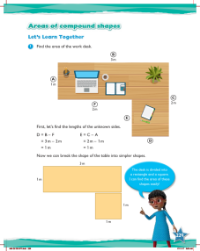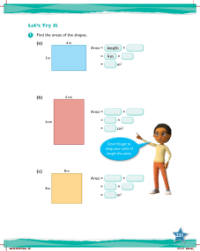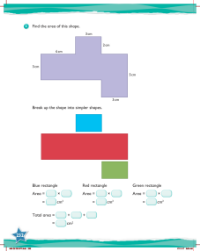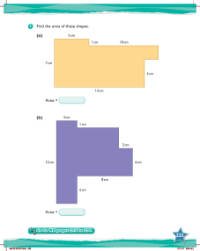Max Maths, Year 6, Learn together, Areas of compound shapes (2)
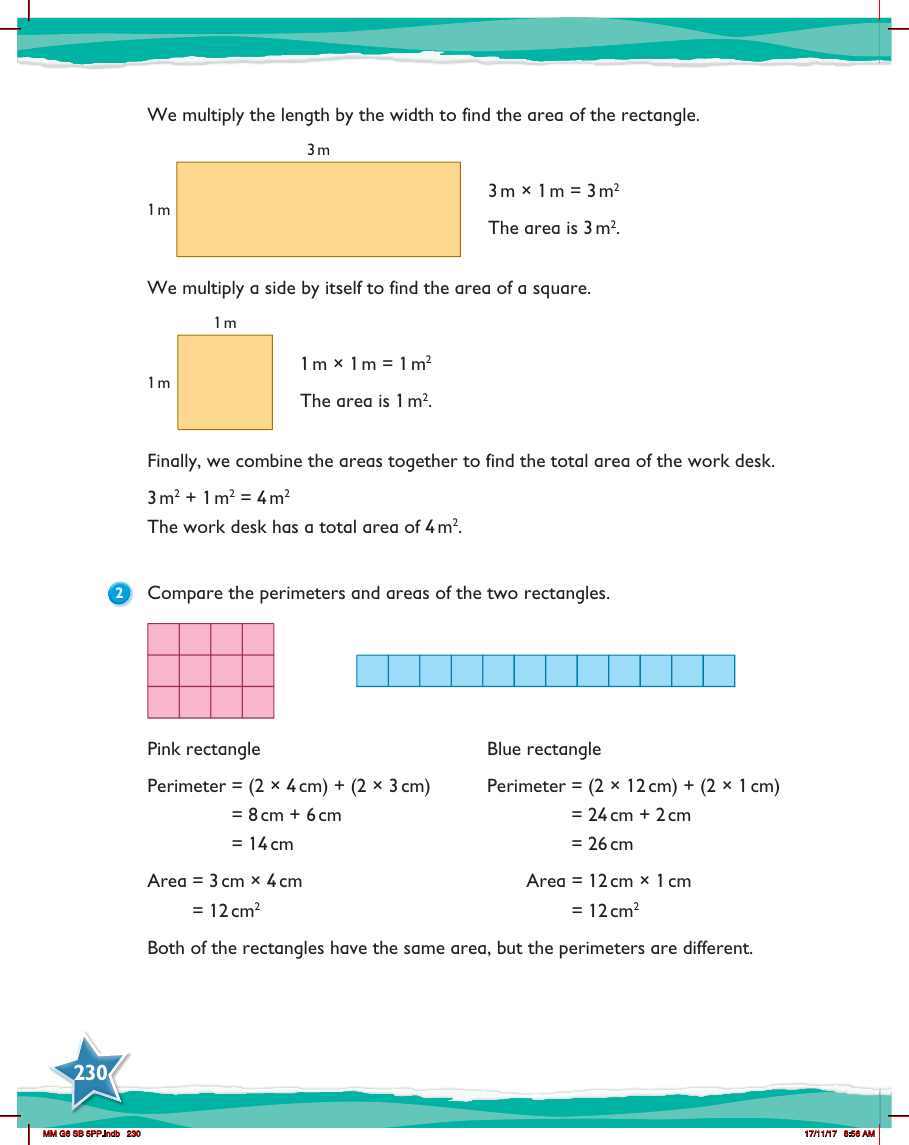
Maths Resource Description
In the Max Maths Year 6 curriculum, students delve into the topic of calculating the areas of compound shapes. The lesson begins by teaching them how to find the area of a rectangle, which is done by multiplying its length by its width. For example, a rectangle measuring 3 metres by 1 metre has an area of 3 square metres (3 m2). Similarly, to find the area of a square, the lesson instructs students to multiply one side by itself, such as a square with sides of 1 metre having an area of 1 square metre (1 m2). These foundational concepts are then applied to a practical situation where students calculate the total area of a work desk by combining the areas of different shapes, resulting in a total area of 4 square metres (4 m2).
The lesson further explores the relationship between the perimeters and areas of shapes by comparing two rectangles. The first, a pink rectangle, has a perimeter calculated by adding together twice the length and twice the width, resulting in a total of 14 centimetres (14 cm). Its area is found by multiplying the length by the width, which equals 12 square centimetres (12 cm2). The blue rectangle, although having the same area of 12 square centimetres, has a different perimeter of 26 centimetres (26 cm). This comparison helps students understand that while two rectangles can have identical areas, their perimeters can vary, highlighting the distinct properties of geometric shapes.
